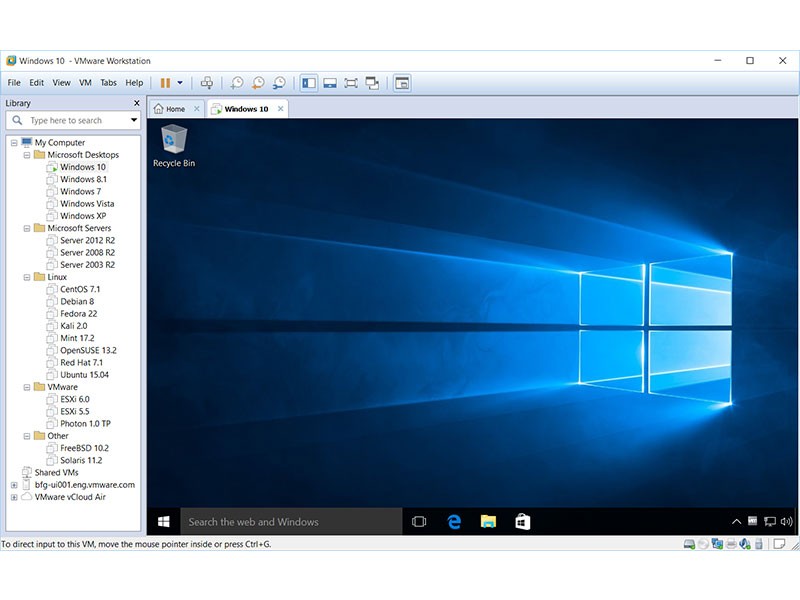Installing Vmware Workstation On Windows Server 2008 R2
Benefits of testing Windows Server 2008 with VMware Workstation Why test Windows Server 2008 in VMware Workstation? Here are just a few of the reasons: • Snapshot functionality and Snapshot Manager - With snapshots, you can easily save your Windows Server 2008 configuration at any point in time, make changes and go back to that point at which the virtual machine (VM) was snapped.

This is excellent for testing installation, patches, configuration changes and application installs. While snapshot functionality isn't really unique with virtualization products, Workstation's Snapshot Manager is. No other virtualization program has a snapshot manager as robust as Workstation's. With the Workstation Snapshot Manager, you can view all of your snapshots in a treed display and move back and forth, through time.
Jul 16, 2012. Installing Windows Server 2008 is pretty straightforward and is very much like installing Windows Vista, but I thought I'd list the necessary steps here for additional information. For those of you who have never installed Vista before, the entire installation process is different than it used to be in previous. Each virtual machine can execute its own operating system, including versions of Microsoft Windows, Linux, BSD, and MS-DOS. VMware Workstation is developed and sold by VMware, Inc., a division of Dell Technologies. There is a free-of-charge version, VMware Workstation Player, for non-commercial use. An operating. Installation Steps. Insert the Windows Server 2008 R2 CD in the CD-ROM drive. Power on the virtual machine to start installing Windows Server 2008 R2. (Optional) If you are using VMware Paravirtual as the default SCSI controller, you can install Windows Server 2008 R2 64-bit using the pvscsi-windows2008.flp driver. Sai Production Suite 10 Serial Killers. Jan 03, 2015 Hello, We have a server 2008 R2 workstation that won't boot. There are various errors depending on what i've tried, i'm looking for assistance to try other.
Here is what it looks like: • Guest OS teaming – With teaming, you can configure multiple VMware Workstation guest VMs to start up all at the same time, as a team. Pdf To Html Converter Online Free. What this means is that you could have a Win 2008 DC, an Exchange 2007 Server, and say, a Windows 2008 OCS Server, all as different guest VMs. You can push a single button and start that entire group of VMs, together.
• Private Networking – With Workstation's private networking (also called 'host-only'), you can take your entire team of guest OS systems (or just two machines), put them on a private network, and only allow them to communicate with themselves. This is the best way to prevent your Windows Server 2008 testing from interfering with your current Windows Active Directory domain. In my opinion, any way that you can use virtualization to test Windows Server 2008 is a decent option but some options are better than others. So what are the other for testing Windows Server 2008?

• VMware Server – One benefit of VMware Server over Workstation is that it is free. However, for testing, I think you will like the ease of use of Workstation better. • VMware ESX Server – Certainly you aren't going to buy ESX Server just to test Windows Server 2008 but if you already have an ESX Server installed, using it to test Windows Server 2008 is a great idea! How to install Windows Server 2008 inside VMware Workstation Installing Windows Server 2008 inside VMware Workstation is not much different than installing other new guest operating systems inside VMware Workstation but there are a few things you need to know. So, here is how to do it, step by step: • If you don't already have VMware Workstation, you can download a fully functioning limited-time demo at this website:. • Obtain Windows Server 2008 either on a DVD or a downloadable ISO file that contains that DVD. Make sure that the version of Win 2008 matches the hardware of your computer.
Thus, if you have an AMB 64-bit CPU, you need the Windows Server 2008 AMB 64-bit Edition. • Make sure that you have the latest version of VMware Workstation to ensure that you have Win 2008 as a listed guest OS. In my case, I have Workstation 6.0.1 and Windows Server 2008 is listed. • Open VMware Workstation and click New Virtual Machine on the Home tab. • Take the default and Select that you want to create a Typical virtual machine. • For the VM type, keep the default of Windows and select the Windows Server 2008 version for your hardware (32-bit or 64-bit).
• Enter the VM name of your choice. I called my VM 'Win2008-1' because I plan on having multiple. • In the next tab, you are asked what kind of network type you want to connect this VM to. I recommend private networking (host-only) if you have an existing Windows AD domain. However, if you aren't concerned with that or if you need interaction between your VM and, say, the Internet, then you may choose the Bridged Networking option. • For Windows Server 2008, the default virtual disk size is 24 GB. If you choose not to use dynamic (allocate disk space now), then this disk space won't really be used until it is needed.